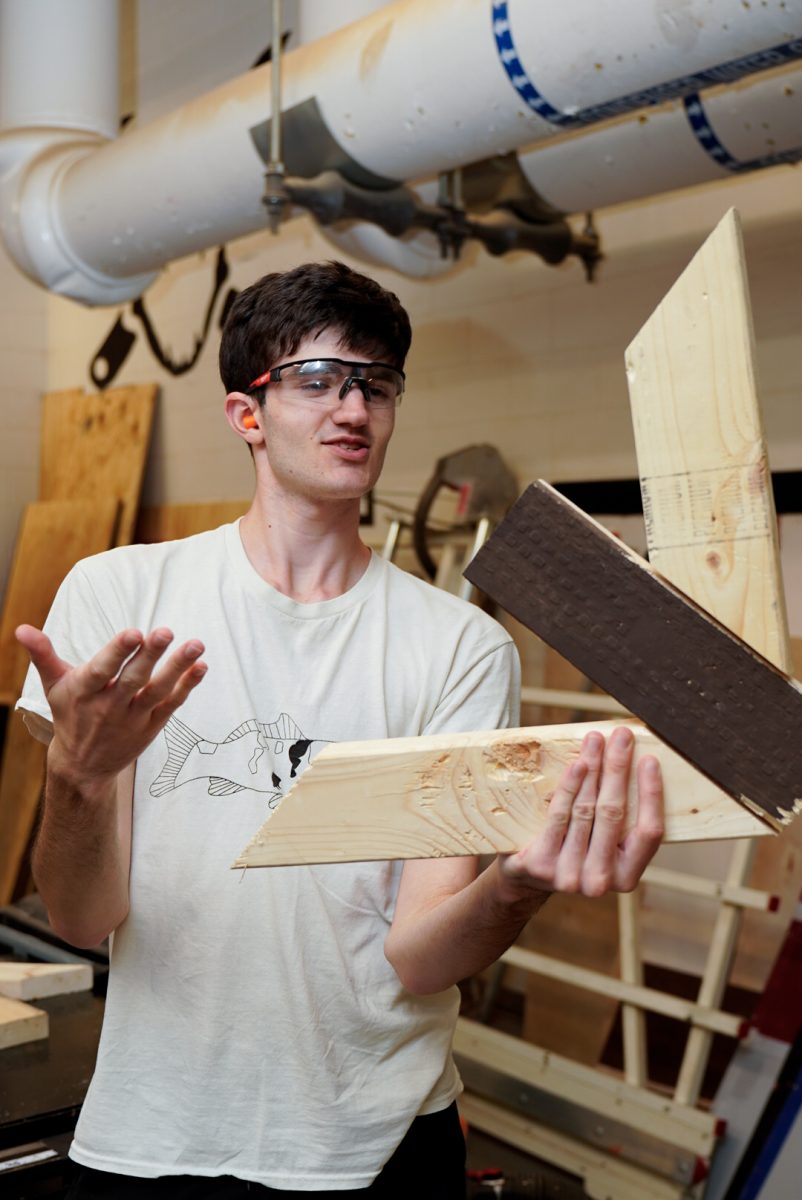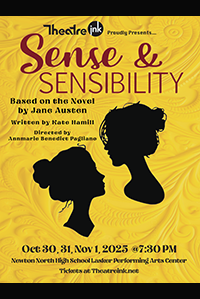 [/media-credit]
[/media-credit]by Gloria Li
Senior Year Project (SYP) is a unique second-semester opportunity, which allows students to “find something they’ve never done before, but always wanted to do or something they’ve done before, but want to take to a new level and investigate towards mastery,” librarian and English teacher Kevin McGrath said.
Those who take SYP conduct their own research, write a paper based on their research, create a project portfolio and give a presentation to communicate the information that they gained from the project to a broader audience.
Over the last two weeks students gave their formal presentations to a panel of judges. Tonight, from 6 to 7:30, those who did SYP will attend a gala, which signals the end of nearly a year of hard work.
Caleb Bromberg
For Caleb Bromberg, literature and the arts are the most interesting subjects. For this reason, he invested his time in a project about the similarities between Shakespeare and hip-hop music.
“My actual project was writing and recording a rap album inspired by Hamlet,” he said.
Bromberg said he chose the topic because he loves Shakespeare and “wanted to help other high schoolers get as into him as I am.”
Bromberg originally had the rap album idea for The Odyssey, but Hamlet proved a better piece to work with, he said.
Although he does not want to be a professional rapper, he said his project helps him prepare for the job he would like to have: English teacher. “I’ll have to talk a lot about Shakespeare then,” he said.
Laurie Kamenetsky
Laurie Kamenetsky performed a comparative analysis of her experience in math classes in the Newton Public School with her experiences at an after school supplementary math program called Russian School of Mathematics (RSM).
She pursued this project because she said she has always wondered why “there were so many success stories coming out of RSM.”
In order to complete her SYP, she looked into the pedagogy of RSM by speaking with many people about the educational foundation of the school. She said that through these interviews, she learned more than she had initially expected.
This project has also influenced her future career path in that “I think after this project, a career in education is an option now,” Kamenetsky said.
Faris Sheikh
Faris Sheikh’s project relates to what he plans to do with his future: attend business school.
His project, he explained, “is about redefining communities and neighborhoods through the use of commerce in a web and mobile application.”
In college, Sheikh plans to study Computer Information Systems, and said he “will use my studies to help my high-tech company.”
Sheikh developed an Apple application that allows individuals to know what is happening at pinpointed locations and to ask, sell or broadcast messages to their neighbors. This will essentially serve as a form of local advertising, according to Sheikh.
“I was inspired by my uncle for the idea of the application, and started developing it as a hobby in August 2011, and chose the topic of researching American neighborhoods and communities because it was the core concept behind my mobile app,” he said.
He said that he could not have done this alone and said he received help from mentors for his startup company. He has been attending events at conferences such as RamenCamp, EntreTech and Boston Innovation Challenge to meet professionals in the computer information systems field.
According to Sheikh, what he enjoyed most about his SYP was how he had transformed it into a business.
“I now have my own company, Blimp Network Inc., and I currently have an investor and a team of web developers,” he said.
Sheikh said he is proud of the progress that he made and how he has already begun transforming his project into something much larger.
Gwendolyn Stoll
Opting for a project in the the sciences instead of humanities, Gwendolyn Stoll, researched different learning styles.
To start her project, she researched the anatomic differences between visual, kinesthetic and auditory learners and how each style developes. Then, she proceeded to create what she said she believed would be the perfect study tool for a visual or a kinesthetic learner: a pop-up biology textbook.
“It combines art and biology, my two favorite subjects, into a tool that other students with a visual or a kinesthetic learning preference can use,” she said.
Stoll said she has always been a very visual learner, and therefore, has struggled in classes like math or chemistry where there are not very many visual aids.
“I wanted to help students like me, so I came up with this idea. I’ve always liked art and science, so combining the two seemed very natural to me,” she said.
Like Wong, Stoll said she enjoyed the freedom that SYP gave her, but above all, she said she “liked the satisfaction and pride that came with producing a finished book that other students can look at and enjoy.”
Clarence Wong
Clarence Wong, who plans to go into mechanical engineering next year, said he found his study of robotic drive systems and manufacturing techniques to be “a challenge that pushes my engineering skills, but stays within the parameters of my field of interest.”
Through his SYP, Wong said he learned that precision machining can be “difficult to deal with” and that “little things like temperature or tool wear can affect the accuracy of my cuts within a thousandth of an inch.”
Wong said he has come to enjoy the “freedom and uninterrupted work times” that SYP has given him.
Instead of having to stop working on something he truly enjoyed to attend class, he said he dropped his math class and “neglected most other subjects” to focus solely on his project.
With all the work that he put in, he said he will continue with the project in the future “because mechanical engineering and manufacturing are my life.”







































